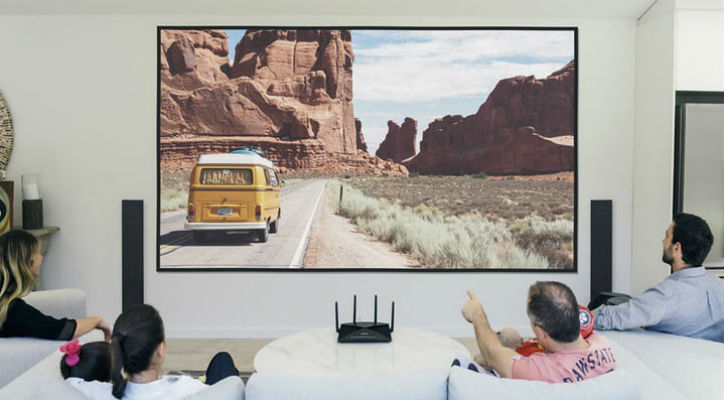
If you’ve been doing any research on new mobile devices or wireless networks, you may have come across the term “WiGig” before. If you’re curious about what that term means and how it applies to you, read on about how this super-fast wireless protocol works.
WiGig is a wireless standard designed to encourage high wireless speeds. It’s very similar to the familiar codes like 801.11ac, except it’s designed to work with a very different frequency. While traditional wireless internet uses 2.4GHz and 5GHz bands, WiGig is designed to use the 60Ghz band to transmit information.
Think of WiGig as a novel alternative to the Wi-Fi that we all use today, one specifically designed to encourage faster internet speeds.
What kind of speeds are we talking about?
Really fast. Today’s all-fiber systems can provide some areas with vaunted “1GB” internet speeds, but WiGig goes far beyond that. The standard was created to support speeds up to 7-8 gigabytes per second (GBps). That’s enough speed to download basically anything in just a few seconds. On the theoretical level, WiGig has the potential to go far beyond that and approach 40-50 GBps, but that’s not really something that today’s devices can handle.
Of course, internet speeds depend on the entire ecosystem of devices, routers, servers, cables, etc. – so amazing speeds of 7 or 8 GBps are somewhat unlikely out in the current world. However, WiGig can still push the limits of how fast wireless data can move, and will only get faster as other materials and devices are upgraded. It also has additional benefits as well such as low latency.
Wow, that’s pretty impressive. When and why was WiGig created?
WiGig is a separate wireless standard that the Wireless Gigabit Alliance created back in 2012-2013, with the specific goal of getting more gigabit-speed internet out in the world. That Wireless Gigabit Alliance was soon after absorbed into the larger Wi-Fi Alliance, which now takes care of universal Wi-Fi protocols. The Wi-Fi Alliance has been managing the WiGig standard ever since.
That might seem like a long time ago, but welcome to the strange world of protocols and standards. You see, it’s relatively easy to create a new protocol — say, for wireless data transfer — by carefully developing the theory and means, sort of like making a blueprint for a new building.
However, it takes much longer to refine that protocol, publish guidelines for it, convince manufacturers that it’s worth investing in, and wait for technology to catch up with the idea.
So why are people talking about WiGig right now?
Two important reasons. First, it has taken time to certify the WiGig standard: The Wi-Fi Alliance has had some busy years working a variety of wireless protocols, and it took time to make sure that WiGig was ready for the real world and updated from the old 802.11ad standard that it was born under. So, we are just starting to see a clear standard for WiGig that modern manufacturers can take advantage of. That’s led to a lot of discussion about upgrades to a variety of devices, including routers and smartphones, which is why WiGig is getting a lot of headlines these days.
Secondly, back in the early 2010s, technology wasn’t quite ready for WiGig. It could be implemented, but the components required were just a little too bulky and unusual for manufacturers to be comfortable producing them in mass. Only a few products tried out WiGig parts, and no one really knew what to make of them. Remember, no one had much experience with devices transmitting 60Ghz signals (more on this in a bit). Fast forward several years, and now technology is far more comfortable with the idea: Manufacturers have had time to design mass-produced components that reliably supply WiGig connections.
So is WiGig going to replace our current Wi-Fi standards?

Not a chance. You see, when wireless signals get up to around 60GHz, they act in very different ways than the traditional wireless signals our routers use. Most importantly, these 60Ghz signals are typically sight-to-sight: They can’t go through walls or cover a broad radius all at one time. Instead, little antennas about the size of your thumb (and growing smaller) are used to direct the signals from device to device.
This severely limits just what WiGig can do. Yes, you can have unbelievably fast internet connections, but they are basically limited to the same room between specifically paired devices. And even then, you have to be careful not to walk across the signal or put anything in its way, or you just lost an internet connection.
As you can see, this means that WiGig will become a niche standard that works alongside our current Wi-Fi for special cases. This might include fast mobile downloads in server rooms, temporarily screen-sharing particular complex content between two devices. This would include routers that are designed to field WiGig connections and turn them into better wireless coverage, among other options. There are also companies already using WiGig to improve VR headsets by removing cables while still provide a data-rich connection.




